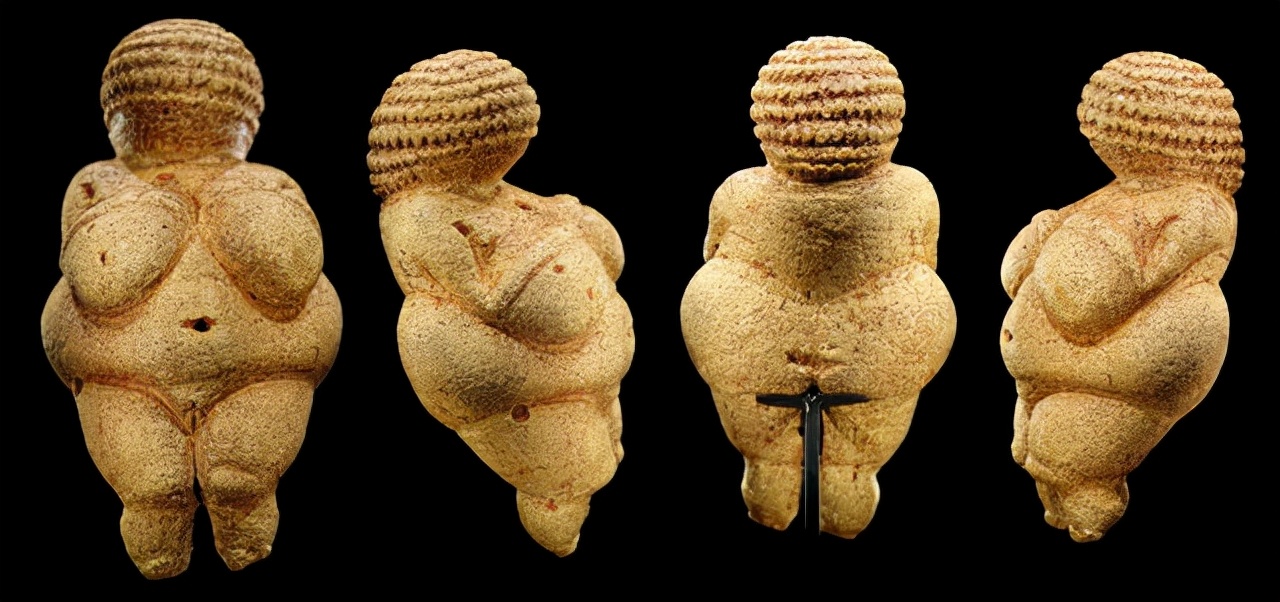The Venus of Willendorf in Villendolph is one of the oldest and most famous depictions of the naked female form in art history. This small limestone statue is from the Paleolithic Period and has been in the town hall collection of the Vienna Museum of Natural History since 1908. It is generally estimated that the statue was carved 25,000 years ago, but due to its ageing, its cultural meaning is still unknown, which also gives many interpretations of the significance of this artifact.
Earlier than the legend of Venus is "Venus"
Similar statues were first found near Villeendorf in Austria in the 19th and early 20th centuries and are known archaeologically as the "Venus Statue", but not because the statue is directly related to ancient Roman mythology.
The statue exaggerated depicts nude women, such as large breasts and swollen lower abdomen, which are related to fertility, so one of the explanations for this statue is the idealized depiction of women by ancient humans and related to fertility worship.

When the first figurines of this type were discovered, they were called "Venus impudique", the French word for "immodest Venus". The Modest Venus is famous in the Roman statue style, depicting the nude Eros covering her vital parts with his hands.
That is to say, from the very beginning this figurine was compared to the statue of Venus. In addition, the goddess Venus in ancient Roman mythology is "the goddess of love, beauty, lust, fertility, and prosperity", so even if this statue was made much earlier than ancient Roman mythology, the name of the goddess of fertility was still borrowed to name the statue.
Some scholars do not agree with the name, so they will simply call the statue "The Woman of Villendolph".
Gaze from where
Because the "Venus Statue" has no soles of feet, it has not been able to stand directly, so some people speculate that it is a carry-on amulet, or an auspicious totem inserted in soft soil. Some people can give it a plump body, and others estimate that it is an aphrodisiac that is appreciated by men.
In 1996, two archaeologists, Catherine McCoid and Leroy McDermott, took a different view. In their paper Toward Gender Decolonization: Female Vision in the Late Paleolithic Period, they argue that figurines are likely self-portraits of women who carved them. Since mirrors had not yet been invented at that time, women who carved themselves would look down at their bodies, resulting in exaggerated breasts and abdomen, as well as narrower calves. McCoid and McDermott believe the statues can help women teach each other about the various stages of pregnancy and childbirth.
But this statement has also been questioned, and Michael Bisson, an anthropologist at McGill University, pointed out that the Paleolithic Age had no mirror and "water tai", and did not always need to look down at his body.
In 2020, Dr. Richard Johnson of the University of Colorado School of Medicine in the United States pointed out that european ice age hunters could not become so plump, so he speculated that these statues were related to extreme food pressure, that is, the size of these statues is a kind of "hope" for women's bodies and fertility, because in times of scarcity, plump women are more able to conceive children than malnourished women.
Paleolithic artworks were also removed
Social media platforms such as Instagram, Facebook, and TikTok have been heavily protested by artists for their strict censorship standards policies, and computer algorithms often mistake fine art paintings, statues, and photography for pornography.
In 2018, the Natural History Museum in Vienna posted a photo of "Venus of Willendorf" on Facebook. Sure enough, as soon as it was uploaded, it was directly deleted. The next day, the museum lashed out at Facebook, releasing an official statement that read, "An archaeological artifact, especially an iconic work like this, should not be banned by Facebook for being 'nude,' and no work of art should bear the consequences." ”